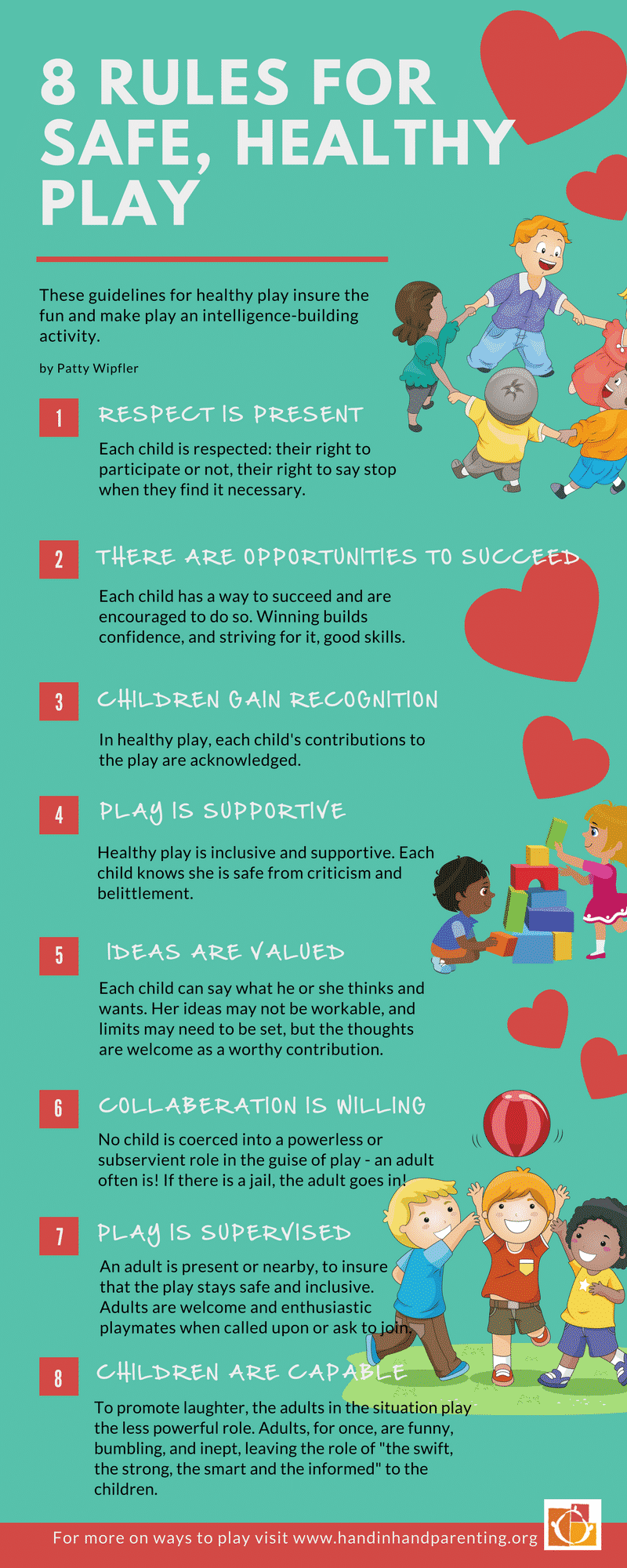We know that play is a child's work.The best play provides opportunities for fun, and also chances to build intelligence. Because good play has the power to help children laugh through fears and address their issues, and get connected to the people around them, g rough-housing games and physical play, imaginary play and roleplaying are as essential to a growing child as snack time and hair-washing – perhaps more so!
Whether play is adult-to-child or child-to-child, monitoring games and play sessions to make sure these 8 ground rules are in operation will ensure safe, healthy and supportive play for all involved.
Building Foundations for Healthy Play Between Adults and Children
Children love us to come close, to play games and to be playful. We just need to keep giving them chances to guide the play, so we don't become overbearing without knowing it.
Our children need us to be affectionate with them, and to be playfully persistent with our affection at times. It's one way to communicate that we're in love with them! Blowing raspberries on your child's tummy, nuzzling into her armpit, giving bucking bronco rides and nibbling fingers or toes are all affectionate moves that might bring a ticklish reaction. (Although we do not encourage tickling, because this is a type of play that an adult owns, and the laughter that occurs through tickling is a physical response that feel be invasive and controlling). Affectionate kinds of play are fine as long as you let the play “breathe” after each move:
You kiss your child's toes, and then let go and see what response she has. If she gets up and runs away, you can lumber after her on hands and knees, trying for a long time before you finally kiss a toe again, with lots of laughter in the chase. Or you bury your head in her tummy, then pull back and grin as she decides what she wants to do.
If she laughs and lies there, waiting, you can try it again.
Why Letting Them Win is Essential
One of Hand in Hand Parenting’s five essential parenting tools is called Playlistening, and is where the child takes the lead in play. Connections and trust get stronger between an adult and child when a child is allowed to take the lead. How does this look? If a child pushes a parent, they can fall over comically, or during a chase game, the parent can flail around until their child catches them. The basic guideline, again, is “follow the laughter.”
Managing Consent and Respect with More Than One Child.
When a game is setting up, establish a president for consent and respect, whether you will join the game or not. When a child has an idea for play, ask, “Jonah has a plan to play tag. Who wants to join the plan?” If play takes an unexpected turn ask everyone involved if they are still happy to play, and tell them that it’s ok if they don’t want to. You’re also fine to move out of play for a second or two to set a limit: “I want to battle, but we can’t throw blocks,” for instance.
Healthy play is inclusive for everyone. If the tide is turning to pitch a group unfairly against one child, or squabbles and fights are breaking out between children, adults can join the game with a challenge. Basically, “who can get me?” This works whether the game is a physical one, like hide and seek and chase, or imagination-based. In a game of superheroes, the adult could pronounce himself “all powerful,” boasting of his strengths and skills, and then loosing horribly. If the game is Jailtime, the adult says, with a glint in his eyes, “Oh! No one would ever put me in jail,” leading the children to capture him and toss away the key. The aggression and power that each child is working on in his own play is channelled towards and adult, and fosters a collaborative approach.
With these guidelines in place, play can be all that it needs to be – about laughter, good fun, a reversal in power skewed toward children, and a world in which to try new personas and new rules out for size safely. We hope you find them useful in your games!
8 Rules for Safe, Healthy Play

Playful responses can break the tension and lighten the mood in minutes. Here's how play can work in common challenges like hair-washing, to overcome bedtime battles, when a new baby arrives and even in response to aggression.
Get our guide 5 Revolutionary Ideas to Make Parenting Less Stressful